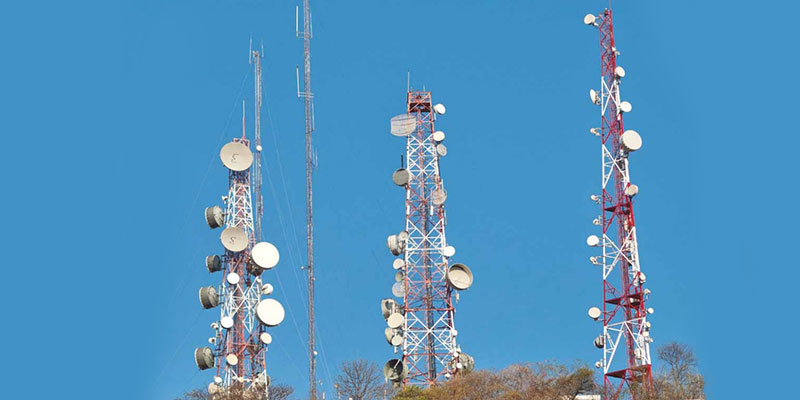- India
- Jul 29
Why India needs new legal framework for telecommunication?
The Department of Telecom (DoT) has floated a consultation paper on the revamp of telecom rules mainly to keep pace with the change in technology like 5G, simplify laws and promote investments.
Legal framework for telecommunication in India is governed by laws which were enacted long before India’s Independence. Stakeholders have been demanding evolution of the legal framework to keep it in tune with changing technology.
The second largest telecom market in the world
Telecommunication has the potential to unleash the true power of India’s economy and accelerate socio-economic transformation. Telecommunication is an enabler of digital governance that emphasizes data driven and people-centric delivery of goods and services to citizens and enterprises. Universal, resilient, secure, accessible and affordable telecommunication is indispensable for an inclusive India.
The number of telecom subscribers in India has grown from 1.5 crore in 1997 to more than 117 crore today. India is today the second largest telecom market in the world.
The criticality of telecommunication was underlined during the COVID-19 pandemic. Telecommunication emerged as a lifeline for the economy by enabling the digital economy to function. Interactions that form the core of a well-functioning economy migrated from physical mode to digital mode. Particularly, remote working and online education gained popularity and societal acceptance. Telecommunication helped sustain demand for services and enabled people to remain connected.
Why should there be a new legal framework governing telecommunication?
• Telegraph was first installed in India in the year 1851 and telephone exchanges were set up in the early 1880s. In light of these developments, the Indian Telegraph Act, 1885 came into force on October 1, 1885.
• To regulate the possession of wireless telegraphy apparatus, the Indian Wireless Telegraphy Act, 1933 was passed and it came into effect on January 1, 1934. Similarly, to regulate the possession of telegraph wires the Telegraph Wires (Unlawful Possession) Act, 1950 was passed and it came into effect on April 1, 1951.
• The technology and the nature of telecommunication have undergone a massive change since these laws came into effect. To keep pace with emerging technologies, telecommunication legislation has evolved with time in most jurisdictions. These include the United States (1996), Australia (1979), United Kingdom (2003), Singapore (1999), South Africa (2000) and Brazil (1997).
• Emergence of new technologies such as 5G, Internet of Things, etc among others offer many opportunities to transform the lives of millions of Indians. It is important to have a modern and future-ready legal framework which addresses the realities of telecommunication in 21st century India.
• India needs a new law which is clear, precise, and attuned to the realities of the sector for realising the potential of telecommunication.
The legislation should address the following points:
• A new law on telecommunication needs to aim at establishing an enabling futureready framework for the development of the telecommunication sector and deployment of new technologies. Such a law needs to consolidate the existing laws governing the telecommunication sector, while keeping in view global best practices. For this, a careful review of laws and best practices in other jurisdictions, will also be needed.
• Comprehensibility of law for citizens is a desirable goal. Any new telecommunication law needs to be drafted in a plain and simple language so that any citizen, who is reasonably aware of the telecommunication sector, is able to understand the contents of the Bill.
• To enable investments, the new law should also provide a framework for various players in telecom value chain like service providers, infrastructure providers, etc.
• At present, spectrum assignment is done through a combination of policies and court orders. A new law needs to bring in regulatory clarity and lay down a specific legal framework. The principle needs to be that spectrum will be assigned to best serve the common good and enable wide-spread access to telecommunication services.
• Despite the widespread availability of telecommunication in our country, tremendous improvement is required to ensure continuity of connectivity. As we move on to better technologies such as the deployment of 5G, their full value can be achieved only with smooth connectivity. Effective Right of Way (RoW) is a pre-requisite to achieve this to enable expansion of telecommunication networks and improvement of telecommunication services.
• The new law needs to address insolvency related issues in the telecom sector with a focus on continuity of service.
• The new framework also needs to consider ways in which to overhaul the current Universal Service Obligation Fund (USOF) with the wider concept of a “Telecommunication Development Fund”. This can address the larger public purpose of ensuring delivery of universal telecommunication service to underserved rural and urban areas, research and development of new technologies, and promote employment and training activities. This can enable the growth of indigenous companies in the technology space.
• Penalties should be proportionate to offences. With this in view, a new law needs to consolidate and update the various provisions on penalties and offences.
Manorama Yearbook app is now available on Google Play Store and iOS App Store


